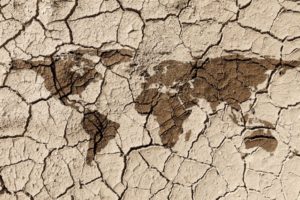SYMPOSIUM WATER SCARCITY: Challenges for Agriculture
ACS NATIONAL MEETING in SAN DIEGO, CA
AUGUST 25, 2019
“Water scarcity is one of the greatest challenges of the twenty-first century.” FAO 2017
Agriculture is both a source and a victim of water scarcity. Currently half of the world’s population is living in areas that experience water scarcity for at least one month a year; about 70% of global water withdrawals are already allocated to agriculture and livestock production, and a third of the world’s groundwater systems are already in distress. What will happen with a growing food demand and competition for water availability from other sectors and urban areas? How can we contribute to tackling one of the biggest challenges (water stress) of this century? These are some of the questions that were discussed during our Symposium. We invited communications on water policy, economics, sustainability programs and agronomic practices that could contribute to protecting this precious resource. The symposium was cosponsor by ACS President, Agro Division, Environmental Chemistry Division, and financial cosponsor Golden Pacific Labs.
The symposium was very well attended by the industry, academia, federal state and local government, extensionist, water districts, and the general public. The presentations were:
- Aftermath of California’s most recent drought: 2012-2016 by Dr. Samuel Sandoval Solis, Land, Air and Water Resources, University of California Davis, CA USA.
- This presentation focused on the most recent drought in California and its impact on agriculture, urban, landslides, fires, groundwater resources, snowpack, forest health, outdated infrastructure, aquatic and riparian ecosystems among other topics. It involved implications for the drought in the passage of water management policies that will shape the water resources management of the state in the year to come.
- Salt mitigation in irrigated crops: Reducing negative impacts, past, present and possibilities for the future, by Steven West. Research Director of the Research Designed for Agriculture, RD4AG
- His presentation was related to the limitation of global crop production due to the soil salinity and the salinity of the irrigation water. The pressure of Agriculture to produce more food and fiber from marginal soils and with diminishing amounts of water available to produce these crops is significant. He discussed several potential new technologies to mitigate the problems in the future, primary on the Southwestern part of the US.
- Biogeosystem technique for healthy soil, water, and environment. By Valery Petrovitch Kalintchenko from the Institute of Fertility of Soil of South Russia.
- On his presentation, Dr. Petrovitch Kalintchenko, explained the benefits of the Biogeosystem techniques (BGT) implementation. The used of BGT increased the soil biological productivity in a range of 50 to 80% compared to the standard technologies.
- Saltwater greenhouse: Combining engineering and plant science to deliver a new concept in food and water security by Dr. Ryan Lefers, King Abdullah University of Science and Technology (KAUST), Saudi Arabia.
- His presentation focused on saltwater greenhouse technology for the growing of salt-tolerant fresh fruits and vegetables. One of the crops is tomatoes the quality of the harvested tomatoes from plants irrigated with saltwater was improved, with higher brix, firmness, and vitamin C levels when compared with same-cultivar tomatoes grown in freshwater. The yield of the production is promising
- Impact of the application of natural biostimulants on water use in crop production under adequate and reduced water availability, by Dr. Giovanni Povero from the Global Research, Valagro Spa, Italy.
- This presentation described the discovery and biological characterization of the new natural plan biostimulants (PBS), in particular, the ones to improve crop water productivity in different crops. PBS approach proposed to reduce unproductive water losses and maintain healthy, vigorously growing crops for both irrigated and rainfed cropping systems.
- Skincare meets agriculture: Cross-over idea creates a novel, water-saving biostimulant with field results presented by Chris Jordan, JRX Biotechnology, Inc. Newport Beach, Ca USA.
- This presentation showed the benefits in using a novel biostimulant to improve turfgrass, ornamentals, forage crops and seedings performance under several drought stress and no- drought conditions. The biostimulant has a significant effect on water savings and drought tolerance across several species. While the results from these trials were encouraging for turfgrass and other plants, additional research is needed to determine the effect on specialty and row crops.
- Chemist without Border’s model for saving water and capturing carbon through biochar production and use, by Ph.D. student Adam W. Cooper Chemistry without border, San Francisco, Ca USA.
- He explained the biochar as a technology that helps to retain the water and the nutrients effectively in the soil. Biochar production via pyrolysis traps carbon that would otherwise be emitted in oxic degradation as CO2 and CH4, leading to it being a “carbon negative” technique. It has been gaining popularity for farming in drought conditions to maximize yields while conserving water and fertilizer use.
- Best management practices to keep pesticides out of the water by Dr. Samuel Sandoval Solis.
- This presentation describes an outreach and education program launched with farm workers (in English and Spanish) to teach best management practices to keep pesticides out of water. This outreach campaign trains every year more than one thousand Pesticide Control Advisors and Applicators (PCAAs) as well as regular farmworkers how to interpret the landscape, and what activities make to keep pesticide and any contaminant out of water.
Organizers of this symposium: Jose Carvalho, Knoell Germany; Thomas Moate, Golden Pacific Laboratories; Jim Seiber and Maria de la Paz Carpio-Obeso, University of California Davis.

